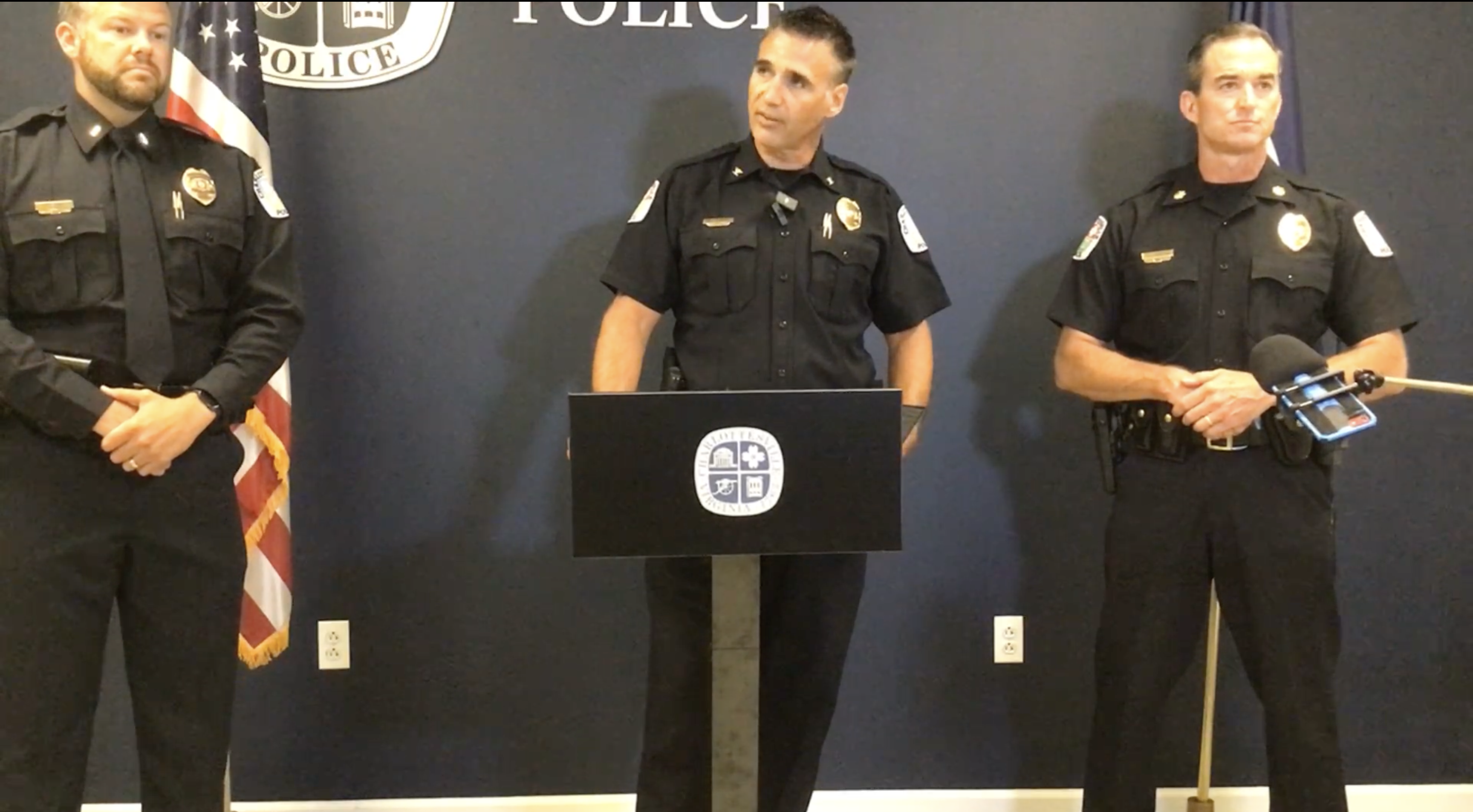On November 9, 1620, the Mayflower bobbed in choppy brine off the Cape Cod coast. On board were 101 puke-green Puritans, seasick and starving after an Atlantic crossing that had taken more than two months. Although they’d hoped to land further south, on the more temperate beaches of Virginia, the passengers and crew soon decided to drop anchor immediately and come ashore in what would become known as Plymouth. They were thirsty, after all. As soon-to-be Plymouth Colony governor William Bradford inscribed in his journal, “We could not now take much time for further search or consideration, our victuals being much spent, especially our beere.”
Unfortunately for them, none of Plymouth’s liquor stores would be open for another few centuries. But the Pilgrims’ keen appetites serve to illustrate the long and close relationship Americans have had, pretty much since day one, with their beer. It’s been a tangled history, from the early Colonial brewers churning out barrels of English-style ales, to the profusion of neighborhood taverns, breweries and saloons that cropped up around the country as the frontier crept westward; from the arrival of German and Czech immigrants who brought with them the light and crisp lagers of their homelands, to the inexorable rise and market domination of the super brewers many of them became; from the long, dark night of Prohibition, to the flowering of craft brewing and home brewing in the 1980s—and the subsequent emergence of the envelope-pushing extreme-beer movement. Nowadays, there are 84 million beer drinkers in the United States, and somewhere around 3,400 domestic and imported brands for them to choose from. And the beer industry here boasts around $75 billion in retail sales—that’s bigger business than either the music or the movie industries.
But beer, of course, is more than a business. It’s a craft, a hobby, a passion. It’s social glue, a central part of the American experience. And two years ago, Ken Wells set out to explore just what that means. In a quixotic journey to find “The Perfect Beer Joint,” the novelist and longtime Wall Street Journal writer, armed with an expense account, embarked on a perambulating journey down the length of the Mississippi River—as good a place as any, he figured—to see what he could see and sip what he could sip.
Travels with Barley: A Journey Through Beer Culture in America (Free Press), the fizzy and flavorful travelogue that resulted, is appropriately intoxicating. Wells’ wanderings take him far and wide: to the World’s Largest Six-Pack in La Crosse, Wisconsin; to a hotel in Dubuque, Iowa, where Al Capone used to lie low drinking pilfered hooch in his own bar; to a Japanese-themed dive hidden deep in the steamy N’Awlins swamps. He tosses mullets at the sprawling Flora-Bama Lounge and Package Store on the Gulf Coast, and tosses back pints at the Gasthaus Bavarian Hunter in the cornfields of rural Minnesota. He stops by “the Castle of the King” (the gargantuan Anheuser-Busch headquarters) in St. Louis, and enjoys the pursuit of hoppiness in Portland, Oregon, where craft brews account for an astonishing 50 percent of beer consumed. There are side trips along the way, ruminations on sundry freaks and geeks of the fermenting arts. Wells hangs out with home-brewing fanatics, explores the furthest reaches of the extreme-beer movement, and relays the strange saga of underground yeast-rustling syndicates. The welcoming, fun-loving people he meets along the way—be they red or blue staters, hard-core beer nerds or jes’ plain folks—give one hope for this great land of ours.
When I meet Wells at Back Bay’s Bukowski Tavern in Boston, a beer-lover’s dive boasting 130 brews from around the world, it’s November 3. George W. Bush has just won re-election, and Wells already has his mantra for the coming term: “Four more beers!”
This afternoon, at least, we’ll have just one each. Wells samples the local craft, choosing the deep, dusky maltiness and rich coffee undertones of an Ipswich Oatmeal Stout, while I spring for a Maudite, a strong and spicy Belgian-style dark ale from Unibroue, a Québec brewery just north of the Canadian border. We sip slowly and savor (as one should) as Wells explains the beginnings of this book—and how he inveigled The Wall Street Journal into picking up the bar tab for his cross-country jaunt. Wells has worked for the Journal’s San Francisco and London bureaus, and more recently in Manhattan, serving as editor of WSJ’s Page One. In a meeting one day, he and some colleagues were batting around ideas for books that might be published by the paper’s new Wall Street Journal Books, an imprint of Free Press.
“Someone said, ‘What about a book on the beer industry?’ and everyone looked at me,” Wells laughs. “I’m not really sure why. There are 300 or 400 people in The Wall Street Journal’s offices, and there are seven or eight who drink beer. And I’m one of them.” (It’s remarkable that in an industry in which afterwork drinks were once as ubiquitous as the pencil and pad, habitual tipplers now constitute just 2 percent of the staff at one of the nation’s premier broadsheets. But we’ll leave thatfor another story.) “There’s a dearth of beer-drinking journalists these days,” notes Wells. “It’s something that I think is missing.”
After Wells had mulled this tantalizing proposition for a while, the idea evolved. “The original notion was to do a book on the beer industry, but who’s going to read a book on the beer industry except people in the beer industry?” he asks. “As I started to refine it, that’s when it became clear to me that it had to be a journey of some kind, because otherwise it would just be another collection of episodic [stories] going from one beer topic to another without any cohesion. That’s when I came up with the whole notion of driving the Mississippi River in search of the perfect beer joint.”
Notwithstanding the fact that Anheuser-Bush is built on its banks, Old Man River might not be the first place one thinks of when considering beer’s place in America. But Wells saw it as a handy pre-mapped route, offering access to out-of-the-way locales and cutting a direct swath through a cross-section of the United States—starting among the hale and hearty beer-drinking Scandinavians of the upper Midwest, descending into what he calls “the beer belly of America,” and on down to the lager-lovin’ Louisiana bayou where Wells grew up. “It occurred to me that this was the best way to take the pulse of the broader beer Zeitgeist,” he says. “I knew I was going to spend a lot of time in the ‘Bud Light Belt,’ especially as I headed down South. But even in parts of the Midwest, away from big cities, even middle-sized cities, craft beer is still…they still don’t really know what it is. They find a Sam Adams and think they’ve struck the mother lode of all craft beers.”
There were side trips, too, to Anheuser-Busch’s hops farm in Idaho, and to the annual meeting of the National Beer Wholesalers Association, in Boston. Wells wanted to see it all. What’s more, he was diving into this river of beer as a pure novice, having done no research before he left. “I learned as I went. I assiduously did not read up beforehand,” he says. “I wanted to go through it as a pilgrim, as an explorer.”
Which is hardly to say Wells was a stranger to beer. “I grew up in this little place where everyone was drinking lagers … it was all Falstaff or Schlitz or Regal. If we had someone buy us beer out behind a liquor store, it was usually those,” he remembers with an impish smile. “As soon as I graduated from college I did the obligatory backpacking trip through Europe. And I might have had a stout for the first time in London; I remember going to Holland and going through the Heineken brewery and saying, ‘Oh, this is so much better than Jax!’ Then, going to Germany, it was stunning—all these full-bodied lagers.”
Further travels stateside afforded Wells the chance to sample regional specialties. “Florida is not a great beer state. Mexico, I drank Tecate. Then, I moved to San Francisco and started drinking Fritz Maytag’s beers.” Maytag—yes, he’s a washing-machine heir—is the president of Anchor Brewing Company, whose trademarked Steam Beer is the spiritual forefather of the rich, flavorful ales so preponderant in today’s craft-brew movement. But Wells says that at first he was happy, by and large, to stick with his macro-brewed beers. “I just remember that in the early days of brewpubs there were a lot of weird ales and green lagers and people who just didn’t know what the hell they were doing.”
Of course, that’s all changed. Thanks to the microbrew revolution of the late ’70s and early ’80s, the United States now has more breweries than any country in the world, and some of the very best beers around come from operations that brew fewer than 10,000 barrels a year.
Wells says one happy by-product of his long and arduous research is a newfound devotion to the plangent, puckering bitterness of a frothy, super-hoppy India Pale Ale: “This book turned me into a hophead.” But if IPA represented a broadening of his horizons, he was completely bowled over by some of the things he saw when he ventured toward the outer edges of the extreme-beer movement. Wells takes us, for instance, to the frontlines of the alcohol-by-volume wars. When, after three years of planning and using a proprietary strain of yeast, Boston Beer Company’s Jim Koch released Samuel Adams Triple Bock a decade ago, its 17.5 percent ABV broke a 15 percent ceiling that was previously thought unbreakable. (It was presumed that existing yeast strains, which convert sugar into alcohol and carbon dioxide, would ferment only to a certain point—and that the sole way to boost alcohol content further would be to distill it, or to freeze it in the finishing tanks. But not only are those methods considered cheating, they’re technically illegal, Wells says. And that’s to say nothing of the deleterious effect they’d have on the beer’s flavor.)
Several years later, Delaware upstart Dogfish Head Brewery, whose founder, Sam Calagione, is something of a rock star in the industry, responded with its super-hoppy 120 Minute IPA, which weighs in at a knee-quaking 20 percent ABV and retails for $9 per 12-ounce bottle. (Wells calls it, admiringly, “nuclear fission in a glass.”) Not to be outdone, Koch soon released consecutive limited-edition beers—2002’s Utopias MMII (24 percent ABV) and 2003’s Utopias MMIII (25 percent ABV)—truly innovative beverages that in many ways resemble cognac more than beer.
Adventurous souls like Calagione, monkeying around with strange ingredients and extraordinary recipes, are keeping the industry interesting, says Wells. Consider Dogfish Head’s Midas Touch Golden Elixir. On a dig in Turkey, in 1957, archaeologists discovered a tomb that they surmised belonged to the ancient potentate who inspired the King Midas myth. The place was 2,700 years old. Biochemical analysis of the residue inside the iron drinking vessels scattered about revealed a residue of barley, white muscat grapes, honey, and saffron—a potion not unlike beer. Scientists at the University of Pennsylvania used mass spectrometers and gas chromatographs to sort out the proper proportions of each ingredient, but still couldn’t nail it. So they approached Calagione, and before long, he’d fiddled enough to figure out a brew that approximates one quaffed by a Phrygian king three millennia ago. (With luck, you can find it in your local liquor store.)
It’s brewers like Koch and Calagione, and New Jersey’s Heavyweight Brewing—whose Two Druids Gruit Ale hearkens back to the Middle Ages by using yarrow, sweet gale, and wild rosemary instead of hops—whom Wells credits with being the rebels and risk-takers of the industry. “It really is true that not since the tech bust in Silicon Valley have we seen so much innovation. These guys are making really wild and interesting things. It’s good for all beer, I think. You have to really appreciate what they’re doing.”
Travels with Barley is steeped in historical context, with Wells digging deep into the history and sociology of beer consumption. He notes that the first known reference to beer is a 4,000-year-old Sumerian recipe carved into a clay tablet dug up from ancient Mesopotamia (now Iraq), and Wells is sharp enough to extrapolate that “the Miller Genuine Draft found near the end of the Gulf War II in the fridge in Odai Hussein’s abandoned sybaritic pleasure pad bore no resemblance to [it].” He tosses in funny tidbits, like Carrie Nation, of the Women’s Christian Temperance Union, scolding in the early 1900s that “men are nicotine-soaked, beer-besmirched, whiskey-greased, red-eyed devils!” But while it’s surprising to be reminded, say, that “Schlitz, in the late 1940s, was the best-selling beer in the world,” Wells’ most enlightening and engrossing tales come from the here and now, from his interactions with his fellow beer drinkers.
As is obvious from the moment we meet, Wells is a people person: affable, open, gregarious, funny. Those qualities are helpful when your job is to talk to folks in a bar, and Wells puts them to good use. Better, his conversational voice and eye for detail make for lucid thumbnail portraits. He introduces us to the big players, of course—Koch and Calagione, and Fred Eckhardt, who penned A Treatise on Lager Beer, the home-brewer’s bible, way back in 1969, and Michael Jackson, the portly and bearded British beer scribe who’s every bit the opposite of the freakish American of the same name.
But it’s the regular Joes who make for the clearest portraits of the Modern American Beer Drinker. Like the 20-something dude in hard-drinking erstwhile timber town La Crosse, Wisconsin, who muses that “actually, when I think about it, the per capita number of bars here is deeply troubling.” Or Jeff, who Wells says is the first literal “two-fisted drinker I ever met,” and who enlightened Wells with an old chestnut of folk wisdom. “He was sitting with two long-neck bottles of Bud, and he says, ‘You know what Budweiser stands for, don’t you?’”—Wells enumerates the letters on his extended fingers—“Budweiser. Because. U. Deserve. What. Every. Individual. Should. Enjoy. Regularly.’”
But who’d have guessed that perhaps the most interesting characters in the book would be single-cell organisms? The most surprising and engrossing chapter is a masterfully written meditation on the strange phenomenon of yeast smugglers. These folks have more than a passing interest in the ravenous fungi, different strains of which are responsible for the limitless flavors possible in beer. Of course, your run-of-the-mill corner home-brewing-supply store sells the stuff for as little as $1.50. But for many enthusiasts, run-of-the-mill is far from enough.
“[O]f a few hundred recognized beer yeast strains in the world, only about 100 are available commercially in the U.S., principally through two for-profit yeast labs,” Well writes. “But if you’re one of those madly passionate homebrewers… [that’s] simply not good enough. Propelled by the maddening theory that, if you just had the yeast, you could make Sam Adams as well as Boston Beer does, or you could make some highly exotic beer that could change brewing life, you wanted them all.” Wells brings a virtuosic brio to the chapter, weaving history, biology, and sociology into this subculture-within-a-subculture, these beer freaks rustling up cultures from other people’s beers and distributing the stealthily acquired yeasts from as far away as Europe, so amateur brewers can try their hands at making beers that emulate the dry tang of a Bass or a crisp Pilsner Urquell. (It’s not illegal, since the yeast strains aren’t genetically engineered and can’t be patented. But there’s a certain amount of intrigue since the labs and name brewers consider them proprietary.)
“The yeast rustlers were the most surprising thing,” Wells says, shaking his head. “To me it was the biggest education.”
Indeed, Wells got quite an education in the course of researching his book. And seeing this beer novice—his critical vocabulary at first limited to bromides like “potent and good” or, simply, “tasty”—happily learning the ropes offers some of the book’s most entertaining moments. This scene, in which a hard-core home brewer offers Wells a pull from a flask filled with strange liquid, is priceless:
I take a small sip. The taste is mellower than the aroma, though it still tracks down my throat like a slug of hot, boozy honey.
Which is what it more or less turns out to be.
“Honey mead,” the man says.
Then, grinning and looking around, he lowers his voice, draws closer and says, “Actually, distilled honey mead.”
When I don’t immediately react to this because, at the moment, I am still ignorant of the intricacies of mead, not to mention the cascading intricacies of distilled honey mead, the man looks at me with the realization that he has just wasted his prize on an ignoramus.
“I went to Nuremberg,” he explains. “There, they make mead, then distill it, then dilute it with water. I dilute mine with beer.”
I nod.
He looks at me in mild exasperation.
“This is 70 percent distilled mead, 30 percent beer. I added cabernet,” he says. “I aged it for a year in a bourbon oak cask. That’s why you get all those vanilla tones.”
I nod again. He waits for me to say something.
“It’s good,” I say. “I like it a lot.”
I realize how lame this sounds the second it comes out of my mouth.
The man nods as if to say, “Oh, jeez.” He goes off with his bottle, seeking more knowledgeable judgments and more articulate appreciation.
Such adventures notwithstanding, Wells found that however daunting the beer world may be for the uninitiated—for all the seemingly arcane zymurgical terminology like diacetyl and ester and specific gravity, or more obscure styles like Altbiers, Geuzes, and Saisons—it is infinitely more accessible than the rarefied realm of oenology. “The issue with wine is that once people cross over and become serious about wine, they automatically become snobs. It becomes this very self-important quest to find this or that. And I’ve certainly met beer snobs, but the beer geeks are kind of missionary — they show people how complex beer can be and how fun beer can be, but they realize that it’s still beer. I think there’s a qualitative difference between the two. Beer people are so much more fun to hang out with.”
Pints, after all, are meant to be clinked. “The river of beer is an incredibly hospitable place,” Wells says. “And brewers, home brewers, and beer geeks are more missionary than the Mormon Church. They always want to convert you to their favorite beer, to their favorite pub, to their favorite style. The problem on the river of beer was not getting access, it was getting away: ‘No, I can’t have another one!’” As if on cue, our waitress arrives and inquires about seconds. Wells has an appointment to make, but checks his watch hopefully just the same. “Ah, shoot,” he decides. “I better not.”
So, after months on the road, sniffing hops and quaffing suds from Minnesota to Louisiana, Oregon to Massachusetts, does Wells now consider himself a bona fide beer geek? “I’m still a beer-geek-in-waiting,” he says. “I’m really interested in the subject, but I’m too lazy to take the next step, which would be to join a beer-judge-certification program or something. Then you really cross over into pure geekism. But I don’t want to do that. One of the things that I really like about this is that I could enter this as an outsider and be welcomed and sort of learn the language. It’s like going to a foreign country and learning to speak well enough that you can join the conversation but you still won’t understand everything around you. And that’s okay. I certainly have now become a much more assiduous beer hunter. Especially now that I like IPAs. I’m always on the hunt for the next great IPA.”
But, Wells insists, he is emphatically not a beer snob. On a hot summer day, he’ll still reach into that vaporous fridge and grab a crisp, cold, old-fashioned mass-produced lager. After all, beer is beer. Drawing distinctions between styles serves only to needlessly subdivide this magic liquid that for centuries has been bringing folks together. As Wells writes at the beginning of the book, “I grew up with people who knew of only three categories of bad beer: warm beer, flat beer, and, worst, no beer at all.”
-Mike Miliard is on staff at The Boston Phoenix from which this story is reprinted with permission.
Miller’s Hepcat Hefeweizen
It’s Thursday night at Miller’s and John D’earth and Co. are still setting up. “Johnny B. Goode” plays over the sound system as I make my way to the bar, which is practically stacked two deep. Eventually I order and receive a hefeweizen from an impossibly busty barmaid. I look around. No room at the tables. No room on the mezzanine. No room to even stand on the stairs. No choice but to venture up and sip my brew in the nonsmoking section, far from the madding crowd.
I find a seat at a booth and check out my fellow 20something boozehounds. I must have missed the memo. Everyone is in uniform: backwards baseball cap, vintage-looking rugby shirts and sweaters that actually come from Abercrombie or American Eagle, and hair with just enough gel to look like it hasn’t been gelled at all—almost. “Ah,” I say to myself. “I’m sitting in the middle of the UVA Law School Class of 2006.”
At 10:44 the band finally starts. D’earth’s trumpet sounds off with brassy burps and stentorian squeals. The sax answers with buttery licks that work the scale like a spider climbing a web. Drums rumble in every so often. Jazz aficionados call this “improvising.” My Mom would call it “nonsense.” I’ll call it “ambiance.”
And that’s exactly what it provides. Combining the sonic madness of the band with Miller’s gaslight-yellow glow, the sweat-inducing crowds and the buzz of their conversations, I felt like I was sitting at the Union Square subway station waiting for the 6 train back to Brooklyn Heights. Miller’s is as close as you’ll get to New York City on a Saturday in Charlottesville on a Thursday.
—Eric Rezsnyak
Just Chillin’ at Mellow Mushroom
I’m not a beer drinker. I prefer a fine glass of red wine to an icy cold PBR any day. That said, once in a blue moon, I am not above indulging my inner frat boy and taking a seat at the Mellow Mushroom. In truth, the reason I go to the Mellow Mushroom is because of Travis, the fine young bartender who also manages the barn where my sister and I keep our horses. Tonight he’s off. Damn it!
I lie and tell the bartender that I’m doing a beer tasting. He picks one of their finest and plunks it down in front of me. Drink up! The guy sitting next to me looks vaguely familiar. Yawn. Given that this is Charlottesville, face recognition is hardly surprising.
But within minutes, it’s official. We do indeed know each other: We used to live in the same building. He calls himself Hot Rod. “Isn’t your name Anna?” he asks. “No, That’s my sister.” “I just assumed you were Anna the whole time.” After some explanation, Hot Rod understands that, while we did both live in the building, my sister and I are two different people. “The more beer I drink the more it makes sense,” he says, nodding.
In the next hour, I learn more about Hot Rod than I did living above him for six months. He’s from California. He’s on ski patrol at Wintergreen. He helped my boss move into her house. He “smoked a doobie with the Doobie Brothers.” All good things in my book.
So maybe it’s the beer, but I feel enriched by my new friendship with Hot Rod. Feeling generous, before I leave I buy Hot Rod a fancy Belgian beer and a pack of Marlboro Lights. Writing this now, I’m going to chock my generosity up to my boundless supplies of holiday spirit and good will. My throwing money around had nothing to do with the fact that I was tipsy. Honest.
—Nell Boeschenstein
$2 Magic at O’Neill’s
The parking lot looked full coming in. Crap! I thought the students would still be at the library. It’s only 7:15pm but I’m gonna have to deal with swarms around the O’Neill’s bar for $2 drafts (after the initial purchase of a handy, green souvenir mug, which Nat the bartender later points out, straps on nicely to your belt). Pulling farther into the lot, though, it turns out it’s only half full. I grab a spot, make my way down Wertland Street, across the tracks and into the bar.
Most of the room is empty except for the bar itself, where only two seats at the end lie vacant. With four mounted flat-screen TVs hanging above the shelves of liquor, it’s easy to see why bar stools there come at such a premium. Three of them tonight play music videos from the satellite feed upstairs. The music is pretty good: Beastie Boys, Hendrix, Franz Ferdinand. The other is playing Comcast Sports with a muted Brett Favre applauding Green Bay coach Mike Sherman for taking the Packers to a 6-0 season…I guess. I don’t like sports that much, so I slide a buck into the Mega Force 2004 at the end of the bar for four rounds of trivia.
Trivia is why I go to O’Neill’s. I don’t like small talk and the trivia board can say it all—I’m a man of depth even while wobbling on the stool. I can throw back a couple Guinnesses and still tell you that the Baroque era was known for emphasizing harmony and the character of individual instruments and voices. Tonight, after a few weeks hiatus, I still have the top score for music trivia, 1,373,000, which I try to top. By 8:30pm, I’m tipsy enough to have blown a few easy questions. But with a day’s stress washed away, I’m feeling once again like I love everybody and that’s enough. —Ben Sellers
Heading off the Hangover
If you’re questing for the perfect beer joint, chances are that eventually you’re going to end up with a perfectly bad hangover. We asked two local brew authorities—Mark Thompson of Starr Hill Brewery and Taylor Smack of South Street Brewing Co.—for their preferred methods for curing a hangover. If you’re hoping fora miracle fix-all, sad to say you’re out of luck.
The brewmasters give some familiar but effective suggestions. And of course there’s always abstinence. But what fun is that? For his favorite anti-hangover regiment, Starr Hill’s Thompson yells out the familiar “Two glasses of water, two aspirin and call me in the morning.”
Though also a fan of the hydrogen dioxide treatment, South Street’s Smack favors taking vitamin B complex and eating a greasy meal of gigantic proportions the morning after a hard-hitting night at the bar. “Drinking water at the beginning of the night helps too, but what are you going to do? You’re drinking beer!”
Smack’s brewing expertise has earned him another tip for tempering the beer-imbibing aftermath. According to Smack, drinking wheat beer can help mitigate morning headaches. “The brewer’s yeast found in unfiltered wheat beer is a natural source of vitamin B complex, so you can get rid of your hangover while you drink.” He laughed at the ridiculousness of this statement, but sticking to Hefeweizen may allow you to lap up some extra brews without having to hug the toilet. —Kelly Quinley




